Both Windows 11 and Windows 10 are secure operating systems. They offer you different options to log in to the system with authorization and prevent unauthorized access.
Windows gives you a log-in screen that asks for a password or another form of login authorization if they have been set up. Passwords are essential if you are concerned about your privacy and security. However, if you don’t feel like providing your account credentials over and over again, you can remove the lock screen and make your account log in automatically.

There are several solutions for not having to provide lengthy passwords to log into your account. Continue reading this post to learn how.
Table of Contents
How to Automatically Login To Windows While Bypassing Lock Screen
If you are using a Microsoft account to log into your Windows PC, you either have to provide the complete credentials to your Microsoft account to log in or provide an alternative method to log in, such as a Personal Identification (PIN) authentication, Picture Password authentication, or biometric verification.
To bypass the lock screen with a Microsoft account, it must first be converted into a local account, and then the password must be removed. However, in this article, you will learn how to bypass the lock screen and log directly into your user account regardless of whether it is a Microsoft account or a local account.
Note: Hyper-V Virtual Machines (VMs) do not support Windows Hello or Microsoft account passwords in Enhanced Mode Session. Automatic login with saved credentials doesn’t work because the connection to the Hyper-V console is performed via the Remote Desktop service. If you have configured either of these options on a VM, we suggest that you disable Enhanced Mode.
Using User Accounts (netplwiz)
For Windows 10 Version 2004 or Older
Note: If you are using Windows 10 Version 20H2 or newer, or Windows 11, proceed to the next section to bypass the lock screen using the User Accounts option.
Follow these steps to stop your system from being asked for a password at every log-in in Windows 10 version 2004 or older:
- Type in either of the following in Run to open the User Account settings in the Control Panel:
- The User Accounts window will now open. Here, select your user account from the list, then uncheck the box next to “Users must enter a user name and password to use this computer.” Then click Apply.
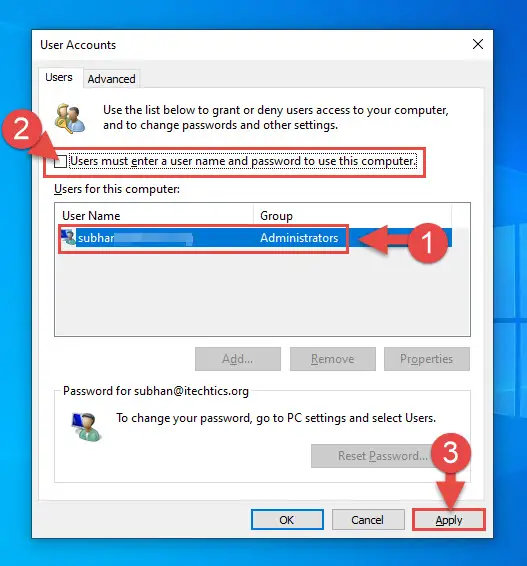
- You will now need to provide your password in a popup window, and then confirm it. Once done, click Ok.
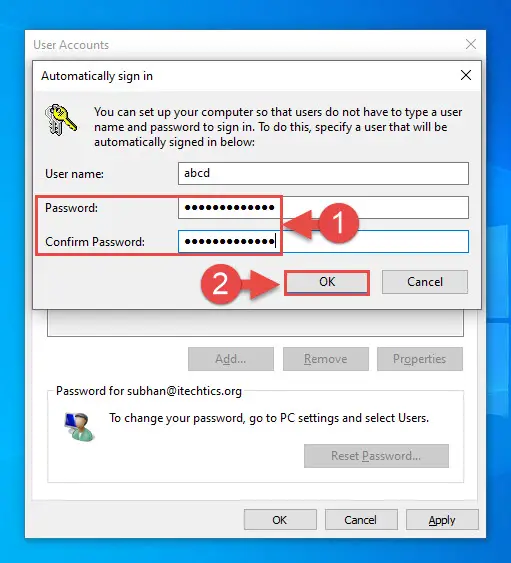
- Click Ok on the User Accounts Window.
- Now restart your computer for the changes to take effect.
For Windows 10 Version 20H2 and Newer, or Windows 11
As you may notice, the option to uncheck “Users must enter a user name and password to use this computer” is no longer available in the User Accounts window in the newer Windows versions. However, this option can be reinstated using a simple trick.
Perform the following steps to bypass the lock screen in Windows 11, or Windows 10 version 20H2 and newer:
Note: This method creates a new Windows Registry item. We suggest that you create a system restore point before proceeding forward in case something goes wrong. If it does, you will be able to revert the changes made using the restore point.
- Open Windows PowerShell with administrative privieleges and run the following command:
New-ItemProperty -Path "HKLM:\SOFTWARE\Microsoft\Windows NT\CurrentVersion\PasswordLess\Device" -Name DevicePasswordLessBuildVersion -Value 0 -Type DWORD –Force
- Now type in either of the following in Run to open the User Account settings in the Control Panel. If it was already open, then close it and then reopen it:
- You will now see that the missing option in the User Accounts window has been restored. Here, select your user account from the list, then uncheck the box next to “Users must enter a user name and password to use this computer.” Then click Apply.

- You will now need to provide your password in a popup window, and then confirm it. Once done, click Ok.

- Click Ok on the User Accounts Window.
- Now restart your computer for the changes to take effect.
Once the computer reboots, you will see that you have been logged into our account directly without having to enter a password.
From Windows Registry
You can also bypass the lock screen through the Windows Registry Editor. Here is how:
Misconfiguration of critical values in the system’s registry could be fatal for your operating system. Therefore, we insist that you create a system restore point before proceeding forward with the process.
Note: This method will save your account’s password in plain text in Windows Registry, which can be compromised if security is breached.
- You first need to determine your computer’s name which will be required in step 5 below. To do so, open Command Prompt and type in hostname. This will display the name of your PC.
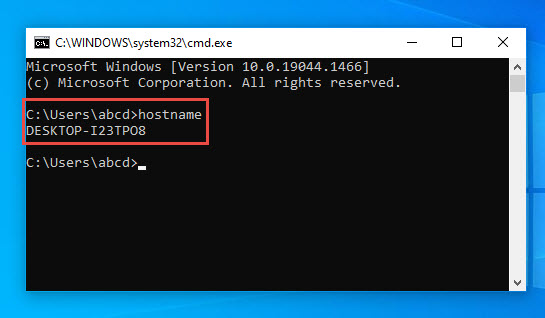
- Now open the Registry Editor by typing in regedit in Run.
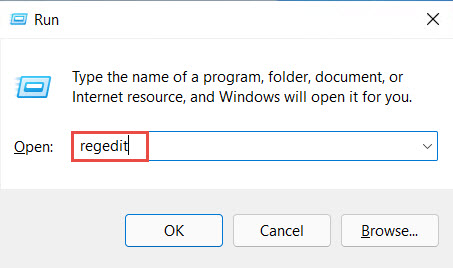
- Paste the following in the address bar at the top for quick navigation:
Computer\HKEY_LOCAL_MACHINE\Software\Microsoft\Windows NT\CurrentVersion\Winlogon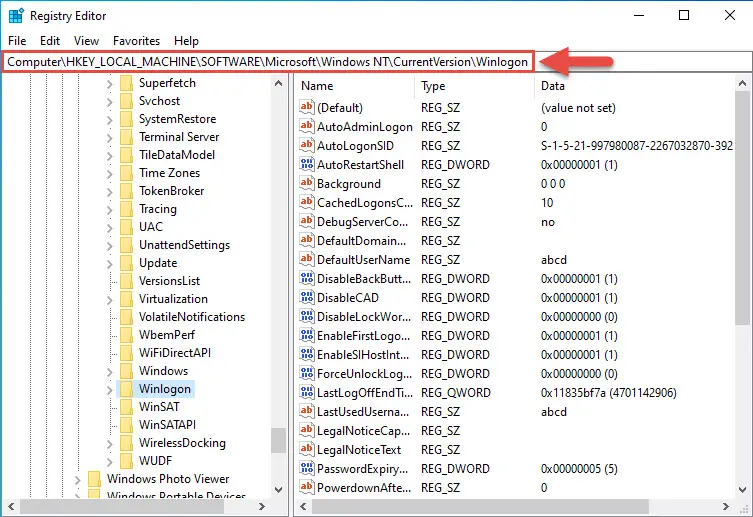
- In the right pane, double-click AutoAdminLogon and change its Value Data to 1.
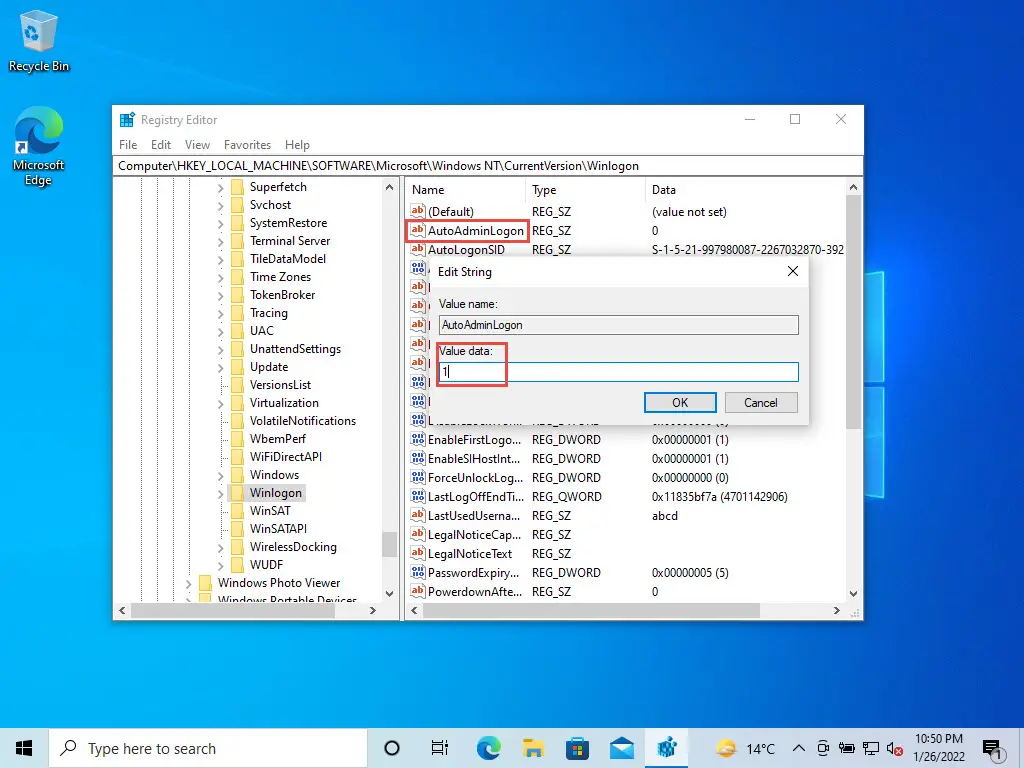
- Now double-click the key DefaultDomainName and replace its Value Data with your PC’s name determined in step 1 above.

- Now double-click the key DefaultUserName and replace its Value Data with your user account name.

- Now right-click Winlogon key in the left pane, expand New from the context menu, then click String Value.
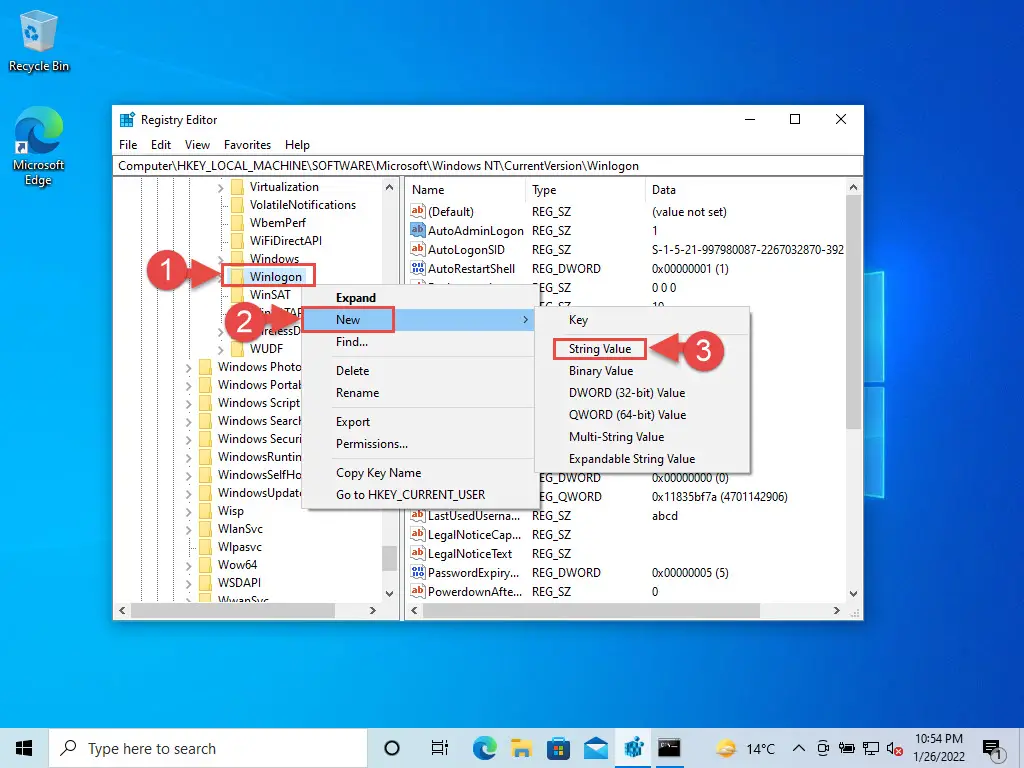
- Name this new String Value “DefaultPassword.”
- Double-click DefaultPassword and change its Value Data to your account’s password in plain text.
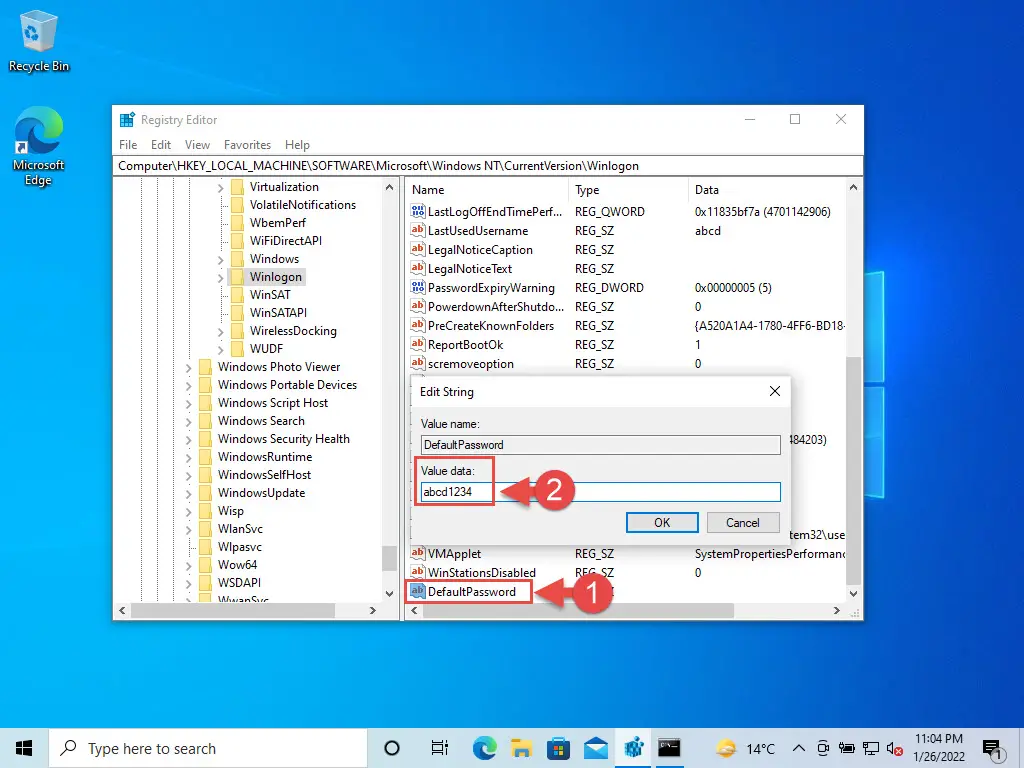
- Now close the Registry Editor and restart your computer for the changes to take effect.
As the computer reboots, you will see that you log in directly into your account without having to provide a password.
Through Command Prompt
If you are not comfortable performing all the steps above, you can use the commands given below to perform the same action via the Command Prompt.
To manipulate the Windows Registry via Command Prompt, run the following commands one after the other in Command Prompt with administrative rights. Replace Username with your user account name, Password with your account’s password in plain text, and PCName with the name assigned to your computer:
Misconfiguration of critical values in the system’s registry could be fatal for your operating system. Therefore, we insist that you create a system restore point before proceeding forward with the process.
reg add "HKLM\SOFTWARE\Microsoft\Windows NT\CurrentVersion\Winlogon" /v AutoAdminLogon /t REG_SZ /d 1 /f reg add "HKLM\SOFTWARE\Microsoft\Windows NT\CurrentVersion\Winlogon" /v DefaultDomainName /t REG_SZ /d PCName /f reg add "HKLM\SOFTWARE\Microsoft\Windows NT\CurrentVersion\Winlogon" /v DefaultUserName /t REG_SZ /d Username /f reg add "HKLM\SOFTWARE\Microsoft\Windows NT\CurrentVersion\Winlogon" /v DefaultPassword /t REG_SZ /d Password /f
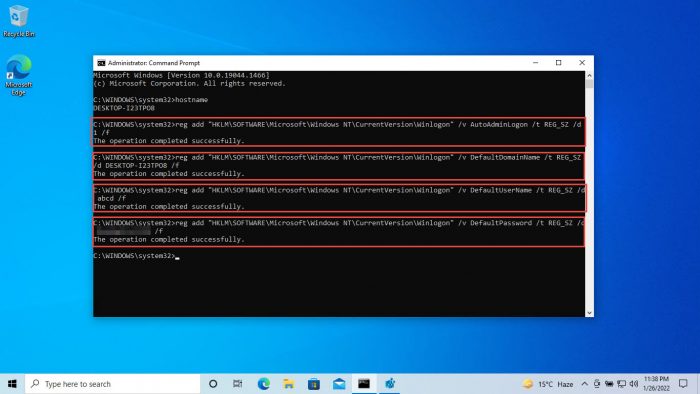
Once entered, restart the PC. As it reboots, you will see that your lock screen will automatically bypass, regardless of whether it is a Microsoft account or a local user account.
Using Group Policy
Note: This method no longer works for newer versions of Windows.
There is also another way to bypass your lock screen through the Group Policy Editor. Here is how:
- Open the Group Policy Editor by typing in gpedit.msc in Run.
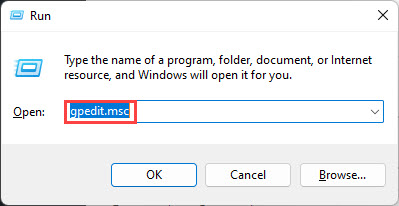
- Navigate to the following from the left pane:
Computer Configuration >> Administrative Templates >> Control Panel >> Personalization - Now double-click the Group Policy “Do not display the lock screen” in the right pane.
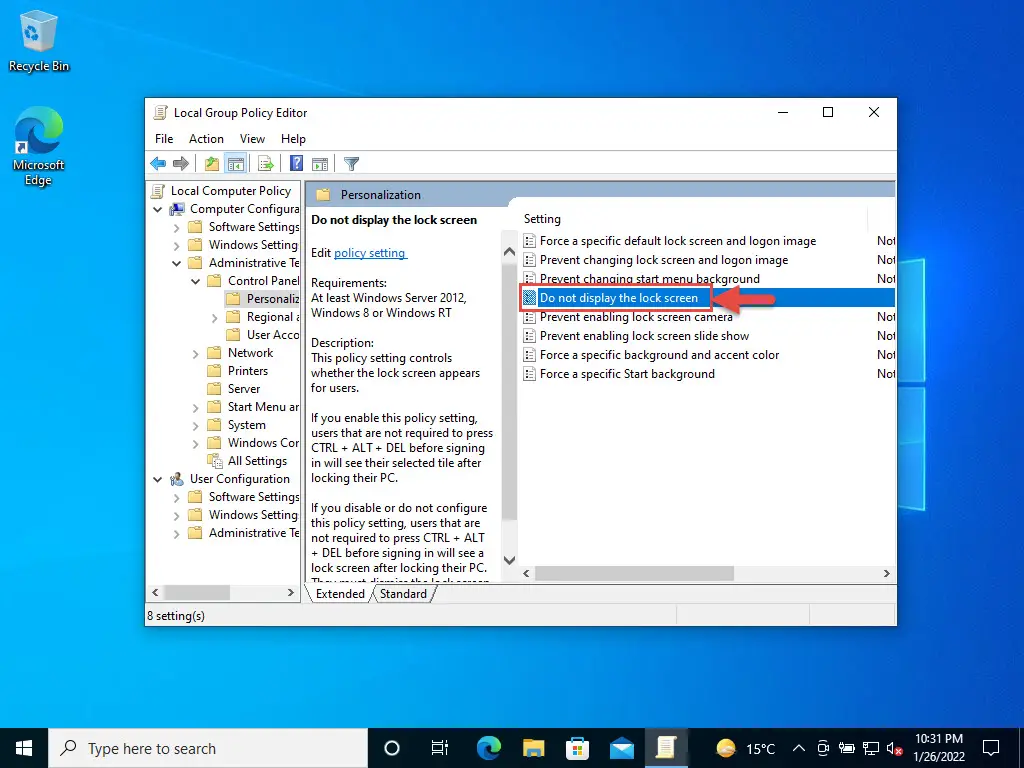
- From the popup, select the Enabled radio button, then click Apply and Ok.
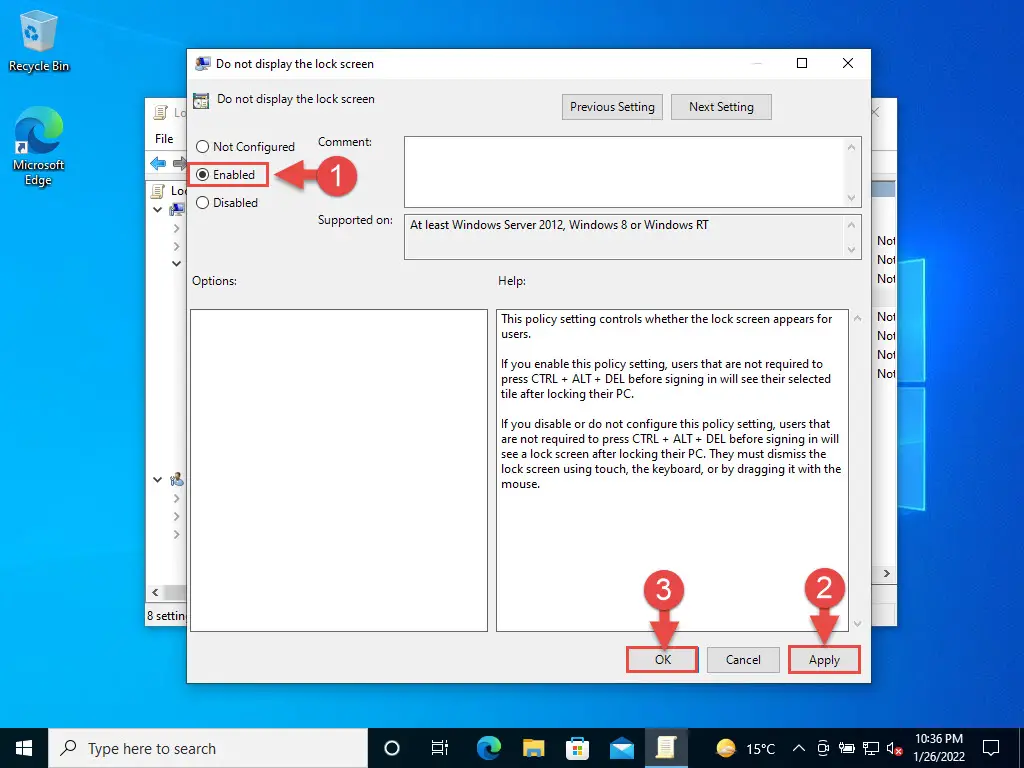
- Now restart the computer for the changes to take effect.
Security Concerns
Now that you have removed the option to provide credentials and Windows logs into your user account directly, it puts your PC in harm’s way if it were compromised. Now anyone with physical access to your computer can enter your PC and have access to everything on it.
We do not recommend that you bypass your lock screen entirely. However, what you can do is provide an alternative method for authentication using any of the means discussed below. These methods will save time while maintaining your system’s security.
Alternatives For Password Login in Windows
Windows offers other login methods that require some kind of authentication other than a password. These are discussed below. The user may choose any of them that may be suitable for them.
Personal Identification Number (PIN)
You can configure a PIN for your user account which replaces your lengthy passwords. It can be both a numeric or an alpha-numeric PIN. Follow the steps below to configure a PIN:
- Navigate to the following:
Settings app >> Accounts >> Sign-in Options >> PIN (Windows Hello) - Now click Set Up to configure a PIN for your account.
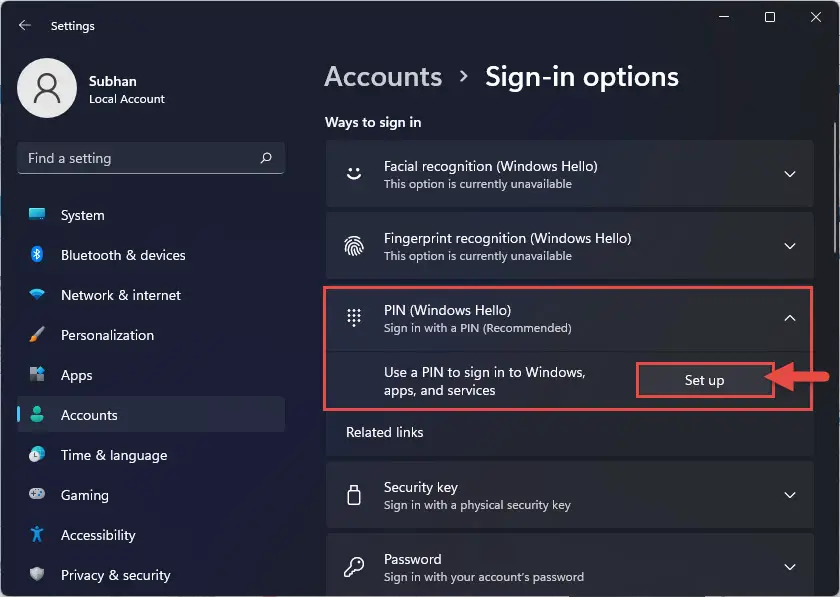
- You will now be asked to provide your account’s password. Enter it and then click Ok.

- Now enter and confirm your new PIN, the click Ok. You can also check the box next to “Include letters and symbols” to make your PIN alpha-numeric and more complex.
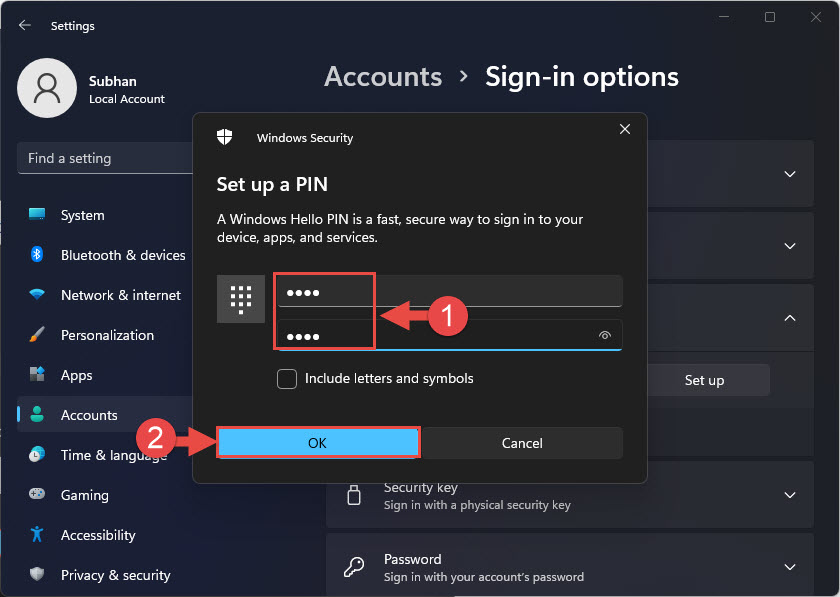
Now you don’t need to remove your password at all. After configuring a PIN, Windows will ask for it rather than asking for a lengthy password. Upon entering your PIN on the lock screen, you don’t need to press the Enter key to send it. Windows will automatically sign you in once the correct PIN is entered.
However, you can still opt to enter your account’s password in case you forget your PIN.
Picture Password
Another way to log in is you can use a Picture Password. Picture Password lets you use a custom image and then configure a few gestures which you can perform in a specific order to authorize a login.
Follow the steps below to configure Picture Password:
- Navigate to the following:
Settings app >> Accounts >> Sign-in Options >> Picture Password - Click Add under Picture Password.

- A new Picture Password window will now open. Start by entering your current password.
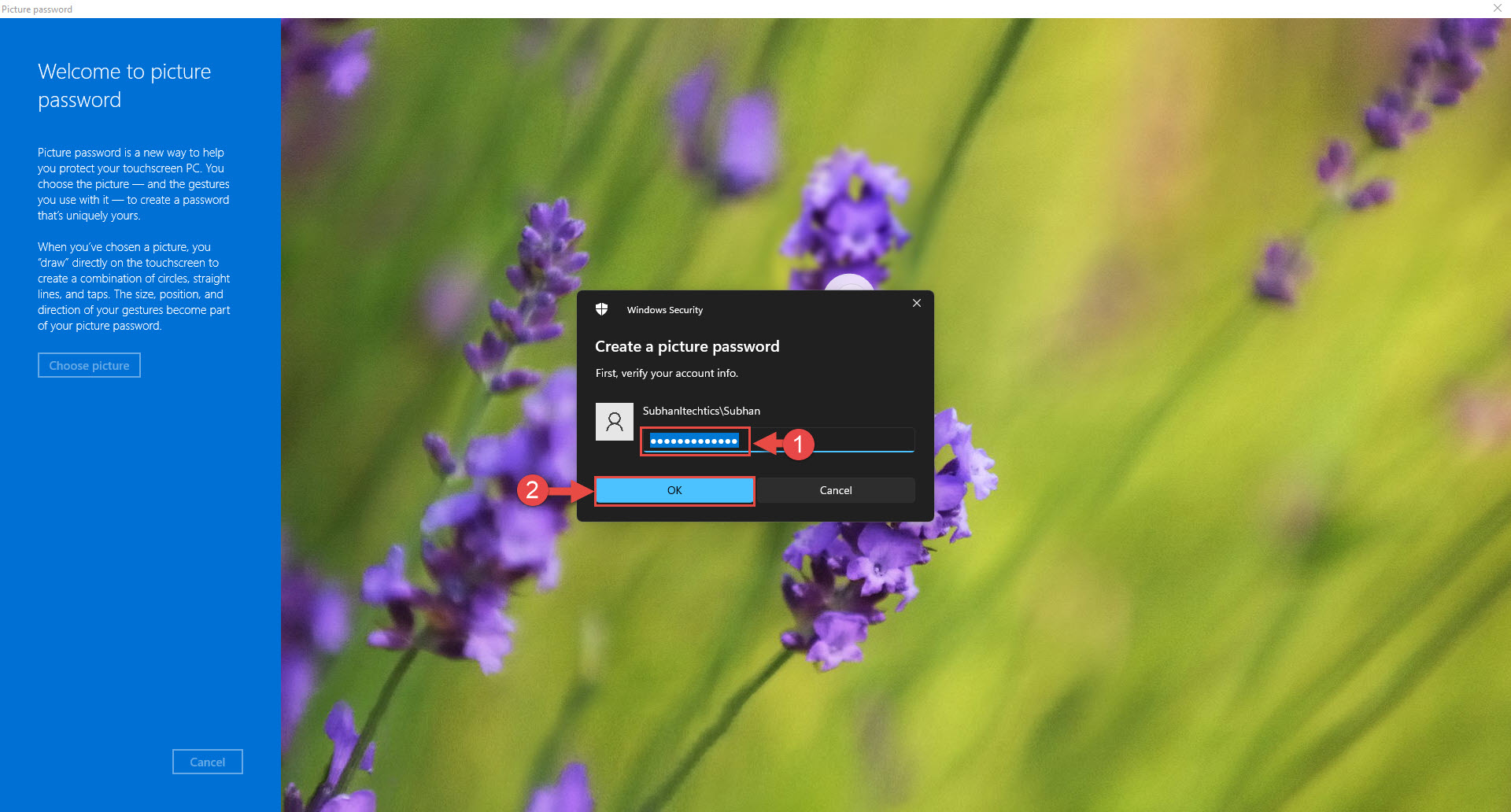
- Now click Choose picture on the left and then select a picture that you want to configure as your lock screen verification photo.
- Once selected, click Use this picture on the left of the window.

- You will now be asked to draw 3 gestures on the picture. Click and hold the left-click on your mouse and drag it across the picture to create a gesture. Repeat this until 3 gestures are recognized.
Note: Remember the gesture’s location and size for a successful login. - Re-confirm the same 3 gestures.
- When recognized sucessfully, click Finish at the bottom of the Picture Password window.

You have now successfully set up Picture Login. The next time you log in, you will be asked to provide the same 3 gestures on the custom image to authenticate yourself.
If you experience any difficulties, you could still log in using your account password.
Biometric Verification (Fingerprint and Facial Recognition)
If your machine supports biometric authentication, which means if it has a fingerprint scanner or a webcam, this will allow you to use your finger or your face to authenticate yourself at the lock screen, instead of a password.
If you don’t have a built-in fingerprint scanner or a webcam, you can use some portable technologies for this purpose and attach them to your PC via a USB connection.
You can configure both of these Windows Hello features at the following location in Windows:
Settings app >> Accounts >> Sign-in Options
Final Thoughts
All these are possible alternates of logging in to your account without entering a password. We hope this article provides complete information and guidance on how you can use your system login by bypassing the lock screen or using alternative authentication mechanisms.

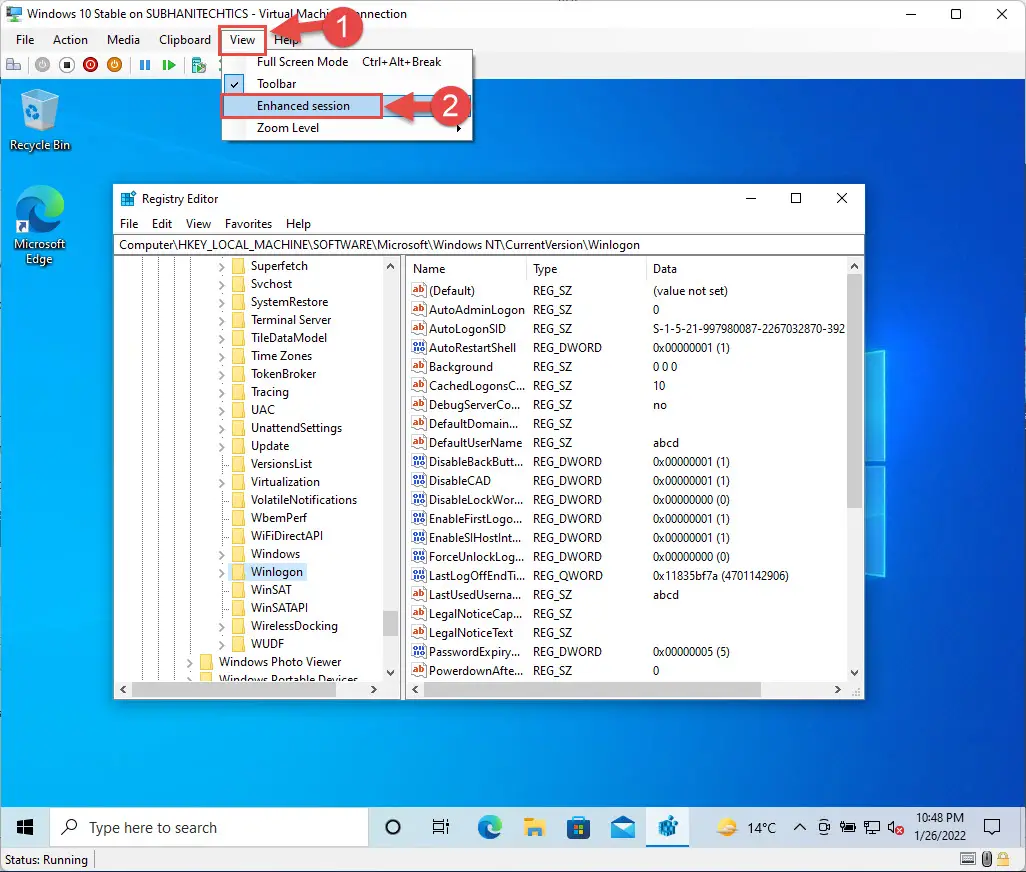
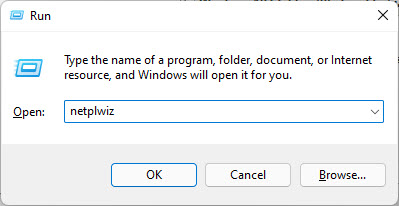
3 comments
Chrissie
Okay I did this yesterday and now I have two choices to sign in with – BOTH needing password. How do I undo it please?
Chrissie
And now typing in gpedit.msc won’t open.
JM
Thank you so much for writing this piece! I was actually trying to setup my login with a password/PIN because Windows was signing me in automatically, and nothing I had tried before seeing your recommendations worked. You’re a life saver!